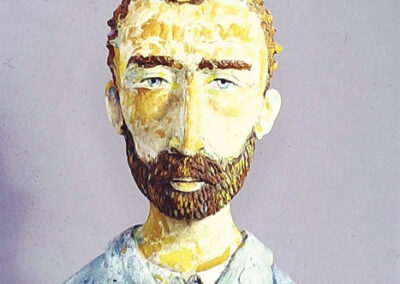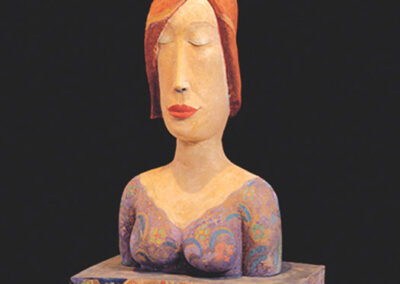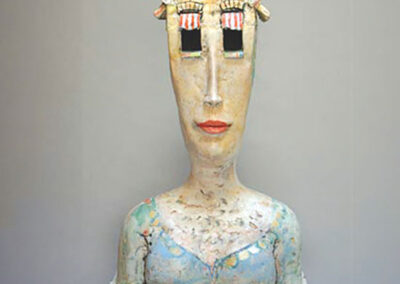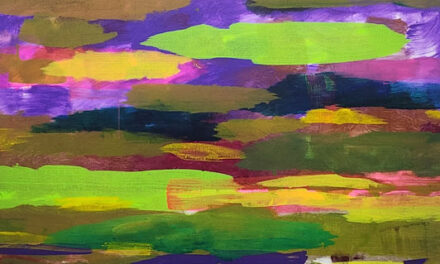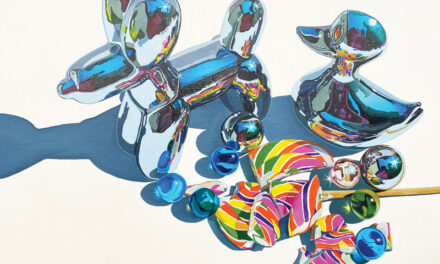For an artist, inspiration comes from anywhere. With ceramic artist Peter VandenBerge, anywhere equals a lifetime of adventure.
“Adventure can take any form,” says VandenBerge, born in the Netherlands in 1935. “It can be in the studio making art, it can be in Indonesia in the rice fields riding the big, horned buffalo. Everything is an amazing adventure. Those are the kinds of things you can remember and that come out in your work.”
VandenBerge’s work earned global appreciation over his 70-plus-year career. He’s known for large ceramic busts featuring elongated features reminiscent of Easter Island heads—one of VandenBerge’s many influences.
The artist partly credits his imaginative way of seeing the world to time spent in Indonesia as a child. His father worked as a geologist for a Dutch oil company and brought the family to Sumatra and Java.
The budding artist encountered exotic animals and art forms, including Indonesian shadow puppets. The images became a huge influence for VandenBerge.
His childhood was far from idyllic. When the Japanese invaded Indonesia during World War II, VandenBerge and his family spent three years in concentration camps being “terribly mishandled.”
But art created a bright spot. At a camp in Adek, the precocious VandenBerge asked a Japanese soldier for a pencil and paper. The soldier complied. Soon VandenBerge was drawing constantly, as “there was nothing else to do.”
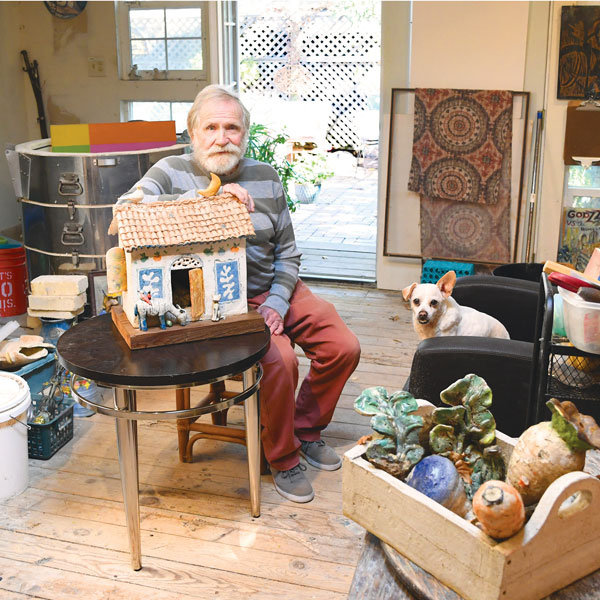
The experience intensified his interest in art and led to a full-circle moment decades later. In 2006, the Shigaraki Ceramic Cultural Park in Japan sought one of VandenBerge’s sculptures. The museum invited him and his daughter, Camille, also a sculptor, to spend a month in Japan working and giving talks.
“I thought, this is what art is about, interacting with each other and making it a worthwhile experience,” VandenBerge says. “It was very satisfying.”
VandenBerge’s journey to international prominence started at Sacramento State, where he earned his bachelor’s degree and studied with Ruth Rippon. A chance encounter with sculptor Robert Arneson led VandenBerge to complete a master’s degree at UC Davis.
He shared space at UCD’s TB-9 ceramics studio with students who would also have major art careers, such as David Gilhooly, Chris Unterseher and Margaret Dodd.
“TB-9 was a great place to be,” VandenBerge says. “Everybody was interested in what everybody else is doing. We had great interactions and shared ideas.”
VandenBerge soon realized “to earn a living just being an artist was not an easy proposition,” especially while supporting wife Marilyn and children Camille and Christian.
He began teaching at San Francisco State, where he “met good artists who all had an influence on me.”
Ruth Rippon alerted VandenBerge of a job at Sac State. He taught there for more than 30 years, retiring in 2003. Along the way, he taught at other colleges, including State University of New York, College of Ceramics at Alfred University and University of Washington.
As an exhibiting artist, VandenBerge’s work is collected by Crocker Art Museum, San Francisco MOMA, Smithsonian Institute, Oakland Art Museum, Whitney Museum of American Art, Shigaraki Museum and many more.
Today he’s busy with smaller sculptures that might become larger pieces. Much of that work happens in his home studio in East Sac, where he has lived for more than 50 years, or at daughter Camille’s art compound in Arden.
He still finds inspiration everywhere.
“You can walk down the street and find all kinds of things—things you tend to overlook,” he says. “Like the white parking lines that have been driven over so much. The paint is lifted off and you can see images in there if you let your imagination go. You can make a whole story. I’m always thinking, how do I make something more interesting?”
For information, visit petervandenberge.com.
Jessica Laskey can be reached at jessrlaskey@gmail.com. Follow us on Facebook and Instagram: @insidesacramento.



